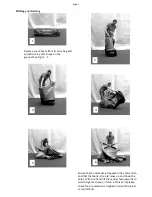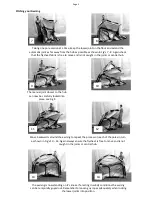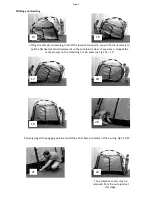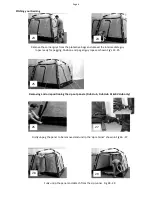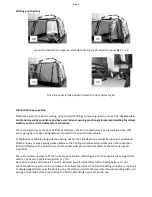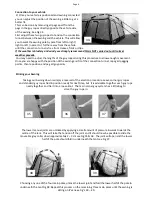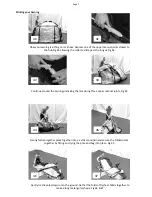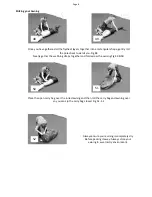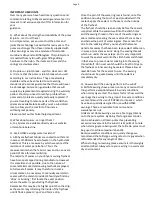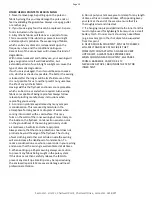
OTHER USEFUL POINTS TO BEAR IN MIND.
1. Never remove pegs by pulling up on the poles or
fabric by doing this you may damage the pole ends or
feet invalidating the guarantee. Always use a peg puller
or another peg
2. If you break a grey foot this can be replaced. A spare
foot is Included in the repair kit.
3. All synthetic fabrics will fade over a period of time.
This is caused by Ultra-violet rays present in sunlight
and atmospheric pollution. The weakening of fabrics,
which can be very dramatic, is dependent upon the
frequency of use and the conditions during use.
Recent loss of the ozone layer will increase this kind of
degradation.
With normal weekend and holiday use, your awning will
give you good service if well looked after, but
extended periods of use in bright sunlight can cause this
type of dramatic degradation.
If such use is envisaged, then it would be wise to seek a
site, which is as shaded as possible. The better the awning
is looked after the longer will be its life. Because of this
it is not possible for us to neither predict nor guarantee
the life of any synthetic fabric.
Having said this the flysheet and inners are replaceable.
which can be done as and when required. Also awning
fabrics are capable of being reproofed. Always follow
relevant proofing manufactures instructions when
reproofing your awning.
4. A common problem experienced by many campers
is condensation. This is caused by moisture in the
atmosphere forming beads or droplets of water when
coming into contact with a cold surface. This may
form on the walls of the inner awning but more likely on
the inside on the flysheet. Condensation can also occur
on the groundsheet of the awning particularly under
air mattresses, bedrolls and other equipment.
Always ensure that the stone protection sheet does not
protrude beyond the edge of the flysheet. The storing
of wet clothing and other wet articles inside the awning
will also increase the likelihood of condensation. To
reduce condensation as a whole, never cook in your awning
and ensure that the awning is well ventilated at all times.
5. When setting up a Khyam awning always use caution
to prevent any fabric being caught in the pole system.
If this does occur then carefully release the fabric to
prevent any small rips. Small rips may be repaired using
the enclosed repair kit. More severe damage will need
professional attention.
6. Do not put your tent away wet or damp for any length
of time as this can create mildew. When packing away
your tent at the end of the season ensure that it is
Thoroughly aired and dried out.
7. If a hanging loop is provided inside the inner tent this
must only be used for lightweight items such as a small
battery torch. On no account should any naked flame
(e.g. a Gas Lamp) or other hot objects be suspended
from this point.
8. NEVER COOK IN YOUR TENT, SYNTHETIC FABRICS
WILL MELT AND MAY CATCH FIRE IF THEY
COME INTO CONTACT WITH A FLAME OR VERY
HOT OBJECT. ALWAYS TAKE EXTREME CARE
WHEN COOKING NEAR YOUR TENT, EG SPARKS
FROM A BARBECUE, CAMP FIRE, ETC
NEVER USE A STOVE / BBQ INSIDE THE TENT OR
INNER TENT.
Page 10
Secco Ltd - Unit 2c, Chartwell Point, Chartwell Drive, Leicester. LE18 2FT


